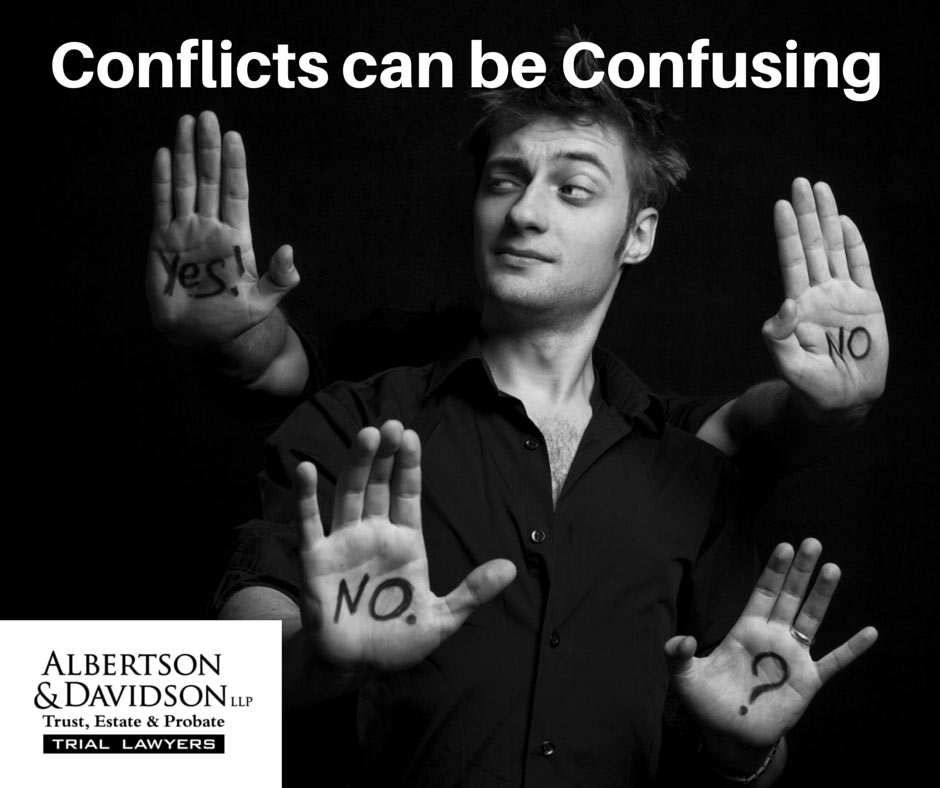
Representing families can be tricky business because conflicts of interest for a lawyer can arise when and where you least expect it. Yet other times a conflict may not be present even where it appears there should be one. This can be explained by looking at the interests involved.
Generally speaking, under rule 3-310(c) of the California Rules of Profession Conduct, a lawyer cannot represent two or more clients whose interest potentially conflict, or whose interests actually conflict, without obtaining prior written consent. That’s an easy enough standard to follow in a typical legal case because one person = one client.
In Trust and Will matters, however, one person can wear multiple hats, which effectively makes them multiple clients. For example, someone can be Trustee and Trust beneficiary. That’s one person, but two very different “clients” under the law. As Trustee, the client must treat all beneficiaries equally and cannot take sides. As a Trust beneficiary, the client has the right to take any position they like even if it is adverse to another beneficiary or the Trustee. As a result, there are times when a single person needs two different lawyers—one for actions as Trustee, and one for actions as beneficiary. It is not the person who counts in this scenario, but rather the interests being represented.
What about an attorney who represents the Trustee, and then separately represents another person who is a beneficiary of the Trust in an action against another Trust beneficiary? That’s a conflict, too. When an attorney is advising a Trustee, then he or she can only advise the Trustee. The same attorney cannot also advise one of the beneficiaries in an action against another beneficiary (see Morales v. Field, DeGoff, Huppert & MacGowan (1979) 99 CA 3d 307).
Can an attorney represent a husband and a wife in creating a plan, and then represent only husband’s Trustee as against wife’s estate? No, that’s not allowed either. When the two representations are substantially similar to one another, the same attorney cannot jointly represent the parties and then represent one of the parties against the other (see Fiduciary Trust Int’l v. Superior court (2013) 218 CA 4th 465).
What about an attorney who drafts a Trust for a Settlor, and then represents the Trustee after the Settlor dies? That’s perfectly fine because the attorney is not representing different interests. The Trustee is meant to enforce and administer the Trust as drafted by the Settlor. Thus, the enforcement of the Trust terms as the Settlor stated them is not in conflict with representing both the Settlor and then later the successor Trustee.
Since this area can be confusing to figure out, the best way to view it is by looking at the interests being represented. A Trustee’s interests (and duties) are different (and potentially conflicting) from a beneficiary’s interests. Thus, a conflict could arise. Whereas, representing two beneficiaries whose interests are aligned is perfectly fine (provided a conflict waiver is obtained beforehand for any potential conflicts).
You must be wary of conflicts in Trust and Will matters because they can arise when you least expect it. But it helps to follow the interests being asserted, rather than the people asserting them, to figure out where the conflicts lie.
References:
